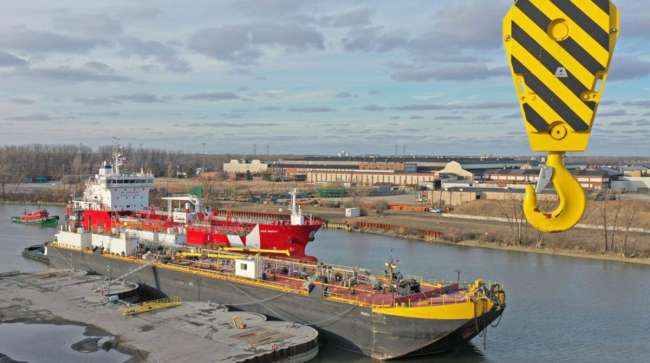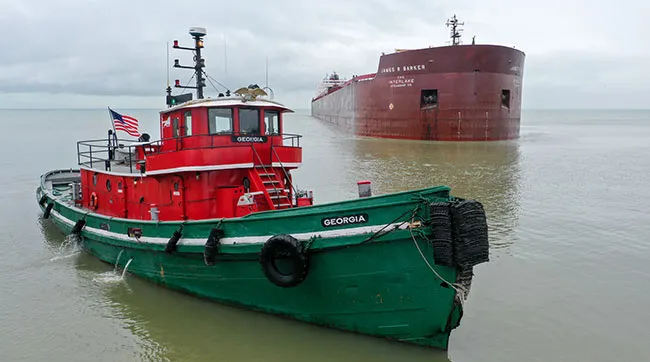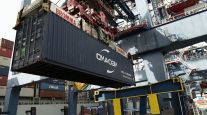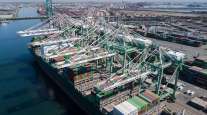The Detroit News
Monroe Container Port to Move Michigan Autos, Agriculture

[Stay on top of transportation news: Get TTNews in your inbox.]
Michigan’s first container terminal is rising in Monroe, potentially positioning the state to grow its supply chain, support auto manufacturing and move the state’s agricultural goods to faraway markets.
The Port of Monroe recently received $16 million in state and federal grants to build a terminal that will allow the port to handle container shipments, the most common and efficient shipment method for goods. The port is located on River Raisin, connecting to the west end of Lake Erie.
U.S. Sen. Gary Peters announced in October that the Port of Monroe would receive roughly $11 million through the Port Infrastructure Development Program. The grant was awarded by the United States Maritime Administration (MARAD), an agency of the U.S. Department of Transportation. It also received $5 million in state funds in November. As a part of Michigan Maritime Gateway, it will be the first maritime container terminal in the state and the most modern such facility on the Great Lakes.
“This port has been working for more than seven years to be able to handle containerized cargo, and now with the new container terminal, Michigan automakers can export cars and trucks they make to Europe via the St. Lawrence Seaway,” Gov. Gretchen Whitmer said during a tour of the port April 3, adding that the state is in the process of building five electric vehicle battery plants, semiconductor chip facilities, solar panels and wind turbines in Michigan. “By supporting facilities like the Port of Monroe on a state, federal and local level, we can work together to bolster Michigan’s supply chain.”
She added: “This port is really vital to our state’s economy. The goods that flow here represent some of our most profitable and important industries like mining, energy, and soon, agriculture. The diversified economy activity spurred by the port supports thousands of jobs through the supply chain and drives tens of millions of dollars of profit. It’s a big deal.
“If you look at a map and see all of the commerce that comes through this part of the Great Lakes system, you’d recognize that this is a really important place for us to be,” Whitmer said. “This is critical. A lot of facilities here were born in the 1930s and have not been significantly upgraded until now.”
The monies will go toward updating the port’s riverfront, turning basin, maritime readiness slip construction and shore power infrastructure, according to its site. Also on tap would be a cargo scanning facility, the governor said.
Riverfront work will include replacing the surface of the existing wharf, constructing a second riverfront wharf to be used exclusively for vessel transfer of wind energy cargoes, and reinforcing shoreline stabilization. Turning basin work will include rehabilitating the concrete dock cap, bollard and fender installation, and replacing roughly 390 feet of failed sheet pile.

The Port of Monroe will receive roughly $11 million through the Port Infrastructure Development Program. (Port of Monroe)
The small boat readiness slip construction will include demolishing and rehabilitating an existing small boat slip to be used by harbor assist vessels. And shore power infrastructure will include removing existing overhead lines and providing shore power to the riverfront wharves.
Coal for DTE Energy Co.’s power plant in Monroe accounts for most of the cargo received at the Monroe port, which received about 2.5 million tons of cargo in 2022. It moves other major freight via ships, trains and trucks. The Monroe port, the only one on Lake Erie, will be the first container facility in the country to scan, by radiation and X-ray, 100% of the containers that come through the facility, said Paul LaMarre, the port’s director.
“Now, Michigan will be in that business to ensure that goods can travel to and from our region as expeditiously as possible and as economically as possible,” LaMarre said. “We won’t be moving record numbers of containers. We will be moving value containers that are adding value to our regional manufacturing.”
Want more news? Listen to today's daily briefing above or go here for more info
Over 10 years ago, the port was a field “overgrown with trees and an underutilized piece of property that wasn’t creating jobs or commerce,” LaMarre said. “We’ve gotten to a point where we are being regarded as a national example of how you put a port and intermodal facility in a small community like Monroe back on the map.”
“We’ve been making ongoing investments in the port since 2012,” he said. “We’ve had the most exponential tonnage growth of any port in the Great Lakes St. Lawrence Seaway system during that time. ... We’re the biggest little port on the Great Lakes.”
The port is expected to finish its updates for its full-service container business by spring of 2024.
Distributed by Tribune Content Agency, LLC




